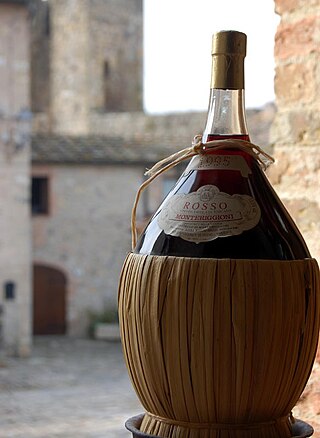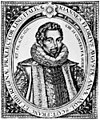Portal:Italy
Wikimedia portal / From Wikipedia, the free encyclopedia
Portal maintenance status: (July 2019)
|
The Italy portal | ||||||
 |
 |
 | |
Italy, officially the Italian Republic, is a country in Southern and Western Europe. It is located on a peninsula that extends into the middle of the Mediterranean Sea, with the Alps on its northern land border, as well as several islands, notably Sicily and Sardinia. Italy shares its borders with France, Switzerland, Austria, Slovenia and two enclaves: Vatican City and San Marino. Its territory also includes Campione (an exclave surrounded by Switzerland) and the Pelagie Islands (an archipelago in the African Plate). It is the tenth-largest country by land area in the European continent, covering an area of 301,340 km2 (116,350 sq mi), and the third-most populous member state of the European Union, with a population of nearly 60 million. Its capital and largest city is Rome; other major urban areas include Milan, Lombardy, Naples, Turin, Florence, and Venice.
In antiquity, the Italian peninsula was home to numerous peoples; the Latin city of Rome in central Italy, founded as a Kingdom, became a Republic that conquered the Mediterranean world and ruled it for centuries as an Empire. With the spread of Christianity, Rome became the seat of the Catholic Church and of the Papacy. During the Early Middle Ages, Italy experienced the fall of the Western Roman Empire and inward migration from Germanic tribes. By the 11th century, Italian city-states and maritime republics expanded, bringing renewed prosperity through commerce and laying the groundwork for modern capitalism. The Italian Renaissance flourished in Florence during the 15th and 16th centuries and spread to the rest of Europe. Italian explorers also discovered new routes to the Far East and the New World, leading the European Age of Discovery. However, centuries of rivalry and infighting between the Italian city-states among other factors left the peninsula divided into numerous states until the late modern period. During the 17th and 18th centuries, Italian economic and commercial importance waned significantly. (Full article...)
Selected article - show another
Of the many eruptions of Mount Vesuvius, a major stratovolcano in Southern Italy, the best-known is its eruption in 79 AD, which was one of the deadliest in history.
In autumn of 79 AD, Mount Vesuvius violently spewed forth a cloud of super-heated tephra and gases to a height of 33 km (21 mi), ejecting molten rock, pulverized pumice and hot ash at 1.5 million tons per second, ultimately releasing 100,000 times the thermal energy of the atomic bombings of Hiroshima and Nagasaki. The event gives its name to the Vesuvian type of volcanic eruption, characterised by columns of hot gases and ash reaching the stratosphere, although the event also included pyroclastic flows associated with Pelean eruptions. (Full article...)Selected picture - show another
- Image 1The Forma Urbis Romae is a massive marble map of ancient Rome, created under the emperor Septimius Severus between 203 and 211.
- Image 2Dome of Florence Cathedral
- Image 3Sellajoch, South Tyrol and Trentino (seen from Pordoi Pass), Langkofel on the left, Piz Ciavazes on the right
- Image 6South face of the Tofana di Rozes in the Parco naturale regionale delle Dolomiti d'Ampezzo
- Image 7Porta Soprana is the best-known gate of the ancient walls of Genoa.
- Image 8View of Piazzetta San Marco toward Grand Canal of Venice, at dawn, with Doges' Palace on the left and Biblioteca Marciana on the right.
- Image 9Interior of the Santa Maria della Vittoria in Rome
Did you know... - show another
- ...that within a tomb in the town of Bergamo, Italy there is a statue dedicated to the life of Enrico Rastelli, the world's greatest juggler?
- ...that Italy's 1957 Eurovision entry, "Corde Della Mia Chitarra", was so long that it resulted in the introduction of length restrictions for competing songs?
Selected fare or cuisine - show another

Italian wine is produced in every region of Italy. Italy is the world's largest wine producer, as well as the country with the widest variety of indigenous grapevine in the world, with an area of 702,000 hectares (1,730,000 acres) under vineyard cultivation, and contributing a 2013–2017 annual average of 48.3 million hl of wine. In 2018 Italy accounted for 19 per cent of global production, ahead of France (17 per cent) and Spain (15 per cent). Italian wine is both exported around the world and popular domestically among Italians, who consume an average of 42 litres per capita, ranking fifth in world wine consumption.
The origins of vine-growing and winemaking in Italy has been illuminated by recent research, stretching back even before the Phoenician, Etruscans and Greek settlers, who produced wine in Italy before the Romans planted their own vineyards. The Romans greatly increased Italy's viticultural area using efficient viticultural and winemaking methods. (Full article...)List of fare/cuisine articles |
|---|
Categories
General images - show another
- Image 1Folkloristic reconstruction of the Company of Death led by Alberto da Giussano who is preparing to carry out the charge during the battle of Legnano at the Palio di Legnano 2014 (from Culture of Italy)
- Image 3The Altare della Patria in Rome, a national symbol of Italy celebrating the first king of the unified country, and resting place of the Italian Unknown Soldier since the end of World War I. It was inaugurated in 1911, on the occasion of the 50th Anniversary of the Unification of Italy. (from Culture of Italy)
- Image 5Pietà, by Michelangelo is a key work of Italian Renaissance sculpture. (from Culture of Italy)
- Image 6Sandro Botticelli, The Birth of Venus (c. 1486). Tempera on canvas. 172.5 cm × 278.9 cm (67.9 in × 109.6 in). Uffizi, Florence. (from Culture of Italy)
- Image 8Luciano Pavarotti, considered one of the finest tenors of the 20th century and the "King of the High Cs" (from Culture of Italy)
- Image 11Dario Fo, one of the most widely performed playwrights in modern theatre, received international acclaim for his highly improvisational style. He was awarded the Nobel Prize for Literature in 1997. (from Culture of Italy)
- Image 13Statues of Pantalone and Harlequin, two stock characters from the Commedia dell'arte, in the Museo Teatrale alla Scala (from Culture of Italy)
- Image 14Clockwise from top left: Thomas Aquinas, proponent of natural theology and the Father of Thomism; Giordano Bruno, one of the major scientific figures of the Western world; Cesare Beccaria, considered the Father of criminal justice and modern criminal law; and Maria Montessori, credited with the creation of the Montessori education (from Culture of Italy)
- Image 15The statue of Italia turrita in Reggio Calabria. Italia turrita is the national personification of Italy. (from Culture of Italy)
- Image 19John Florio is recognised as the most important Renaissance humanist in England (from Culture of Italy)
- Image 20Federico Fellini, considered one of the most influential and widely revered filmmakers in the history of cinema (from Culture of Italy)
- Image 21Palazzo della Civiltà Italiana in Rome is a perfect example of modern Italian architecture. (from Culture of Italy)
- Image 22Teatro di San Carlo, Naples. It is the oldest continuously active venue for opera in the world. (from Culture of Italy)
- Image 25William Shakespeare is an example of an Italophile of the 16th century. (from Culture of Italy)
- Image 27Roman mosaic of Virgil, the most important Latin poet of the Augustan period (from Culture of Italy)
- Image 28David, by Michelangelo (Accademia di Belle Arti, Florence, Italy) is a masterpiece of Renaissance and world art. (from Culture of Italy)
- Image 30The cover of the Corriere dei Piccoli on 11 July 1911 carries a cartoon strip in the Italian style without speech bubbles. (from Culture of Italy)
- Image 31The Colosseum, originally known as the Flavian Amphitheatre, is an elliptical amphitheatre in the centre of the city of Rome, the largest ever built in the Roman Empire. (from Culture of Italy)
- Image 32The Last Supper by Leonardo da Vinci, possibly one of the most famous and iconic examples of Italian art (from Culture of Italy)
- Image 35The Creation of Adam is one of the scenes on the ceiling of the Sistine Chapel of the Vatican, painted by Michelangelo sometime between 1508 and 1512. (from Culture of Italy)
- Image 37Alessandro Manzoni is famous for the novel The Betrothed (1827), generally ranked among the masterpieces of world literature. (from Culture of Italy)
- Image 38Pinocchio Disney film is based on The Adventures of Pinocchio by Carlo Collodi. (from Culture of Italy)
- Image 39Scrovegni Chapel. The chapel contains a fresco cycle by Giotto, completed about 1305 and considered to be an important masterpiece of Western art. (from Culture of Italy)
- Image 41Traditional pizza Margherita, whose ingredients, tomato (red), mozzarella (white) and basil (green), are inspired by the colours of the national flag of Italy. (from Culture of Italy)
- Image 46Dante Alighieri, one of the greatest poets of the Middle Ages. His epic poem The Divine Comedy ranks among the finest works of world literature. (from Culture of Italy)
- Image 49Leonardo da Vinci's Mona Lisa is an Italian art masterpiece worldwide famous. (from Culture of Italy)
- Image 50Palazzo Senatorio, seat of the municipality of Rome. It has been a town hall since AD 1144, making it the oldest town hall in the world. (from Culture of Italy)
- Image 51Antonio Vivaldi, in 1723. His best-known work is a series of violin concertos known as The Four Seasons. (from Culture of Italy)
- Image 53The Roman Empire provided an inspiration for the medieval European. Although the Holy Roman Empire rarely acquired a serious geopolitical reality, it possessed great symbolic significance. (from Culture of Italy)
- Image 54The Piazza dei Miracoli, with Pisa Cathedral, the Pisa Baptistery, and the Leaning Tower of Pisa, in Pisan Romanesque style (from Culture of Italy)
- Image 57The Jefferson Memorial in Washington, D.C., reflects the president's admiration for classical Roman aesthetics (from Culture of Italy)
- Image 58The espresso comes from the Italian esprimere, which means "to express," and refers to the process by which hot water is forced under pressure through ground coffee. (from Culture of Italy)
- Image 59Giorgio Moroder, pioneer of Italo disco and electronic dance music, is known as the "Father of disco". (from Culture of Italy)
- Image 60Romulus and Remus, the Lupercal, Father Tiber, and the Palatine on a relief from a pedestal dating to the reign of Trajan (AD 98–117) (from Culture of Italy)
- Image 62The historic seat of the Corriere della Sera in via Solferino in Milan (from Culture of Italy)
Topics
Related portals
Associated Wikimedia
The following Wikimedia Foundation sister projects provide more on this subject:
-
Commons
Free media repository -
Wikibooks
Free textbooks and manuals -
Wikidata
Free knowledge base -
Wikinews
Free-content news -
Wikiquote
Collection of quotations -
Wikisource
Free-content library -
Wikispecies
Directory of species -
Wikiversity
Free learning tools -
Wikivoyage
Free travel guide -
Wiktionary
Dictionary and thesaurus






























































































